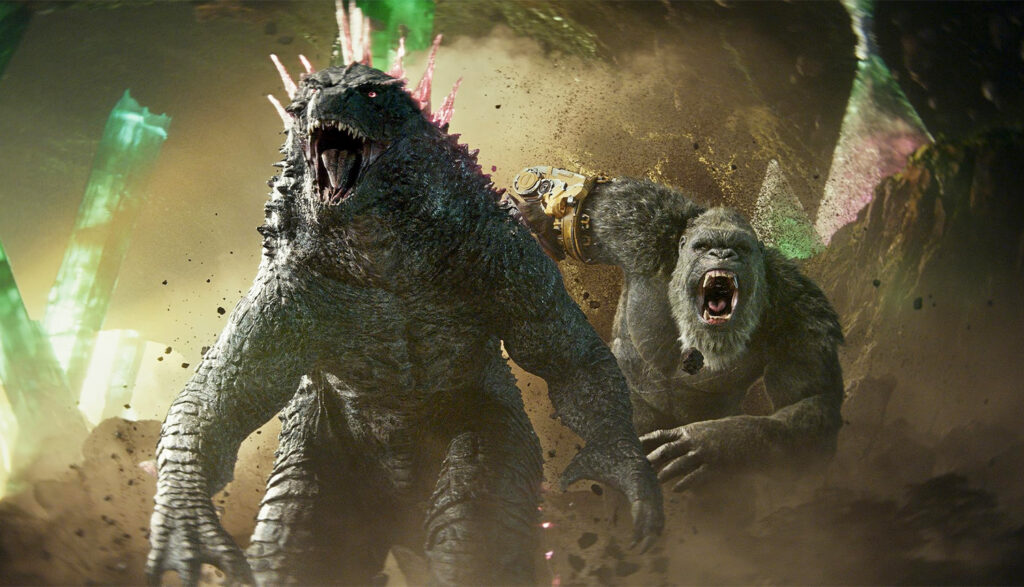
The tagline for Roland Emmerich’s 1998 version of Godzilla proclaimed, “Size does matter.” Fair enough, but so do scale, weight, and clarity. The computer-generated beasts who rampage through Godzilla x Kong: The New Empire are undeniably large. But as creatures of action cinema, they are paper tigers—ephemeral and insubstantial, lacking in true force. They look like giants and punch like toddlers.
This is something of a problem, because the whole point of an enterprise like Godzilla x Kong is for its titular monsters to haul off and kick ass. Director Adam Wingard, who previously helmed Godzilla vs. Kong (the prior entry in Warner Bros.’ increasingly unwieldy cinematic universe), is no fool; he knows that the audiences flocking to this movie expect it to feature extensive footage of the King of the Monsters and the Eighth Wonder of the World laying waste to assorted animal competitors. He obliges immediately, as the opening scene finds a grey-bearded King Kong sprinting through the jungles and mountains of the Hollow Earth—the subterranean realm where he’s taken up a semi-peaceful existence, away from prying human eyes—as he’s chased by snarling predators that look like a cross between a jackal and an anteater. Kong’s predictable thrashing of these puny foes immediately emblematizes the picture’s failings. The issue isn’t so much that the creatures look fake—the special effects are impressively detailed in terms of color and design—but that the combat carries no tangible impact. It feels like an elaborate WWE routine—all posturing and preening, no real pain.
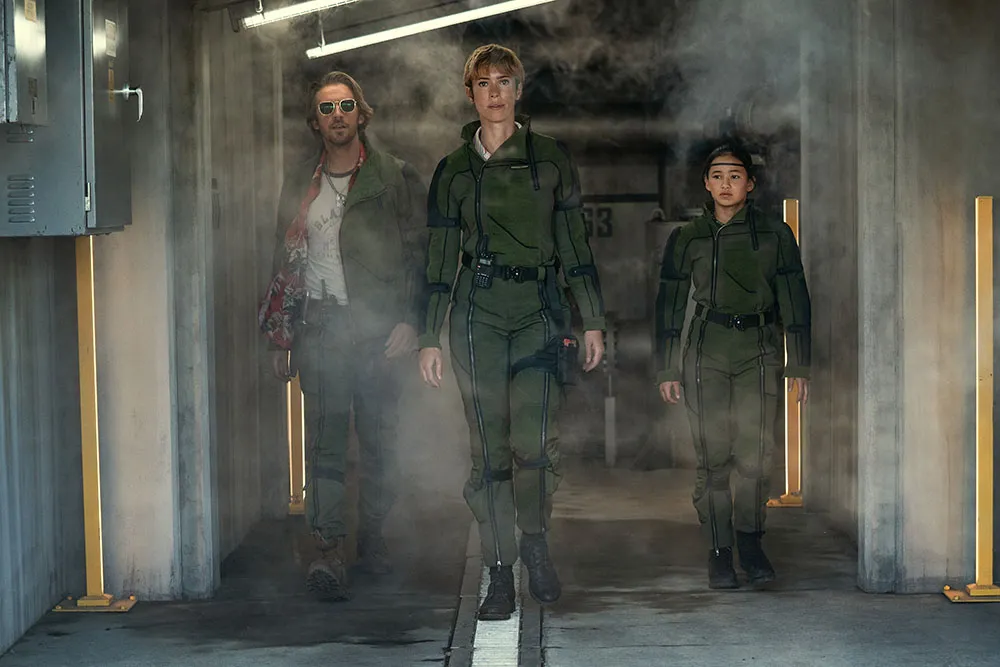
OK, but what about the characters? Ever since Gareth Edwards brought Japan’s most famous kaiju back to Hollywood with 2014’s Godzilla, the consensus surrounding these movies—which also include the passable Kong: Skull Island and the forgettable Godzilla: King of the Monsters—has been that the monsters are awesome and the humans are useless. I can’t quite say that the dynamic is reversed this time around—not when poor Brian Tyree Henry is again forced into the thankless role of panicky comic-relief conspiracy theorist—but a few of the actors at least manage to imbue their parts with a measure of personality. That’s the happy consequence of casting Rebecca Hall; she turns Dr. Ilene Andrews, the brilliant scientist who’s also a Kong expert, into something resembling a person, even when her primary function is to spout exposition regarding the monsters’ movements and motives.
Most of this dialogue, which is also uttered by the usual array of fretful newscasters and sweaty data analysts, is delivered gracelessly but speedily, as though the screenplay (by Terry Rossio, Simon Barrett, and Jeremy Slater) senses the need to rush through logistical banalities. Previously (im)mortal enemies, Godzilla and Kong have now reached a precarious détente, with the former snoozing peacefully inside the Colosseum while the later rumbles through the Hollow Earth and deals with a toothache. Yet Andrews’ adopted daughter, Jia (Kaylee Hottle), is troubled by disturbing visions of Kong’s underworld, presaging a rift in this newfound stability. And so, Andrews and Jia clamber into one of those handy state-of-the-art government vessels and venture into Kong’s dominion; they are joined by a hapless podcaster (Henry), along with Andrews’ old flame, Trapper (Dan Stevens, star of Wingard’s best movie, The Guest), the kind of charismatic hotshot who, if the film had been made in the ’80s, would be described as the world’s most bodacious veterinarian.
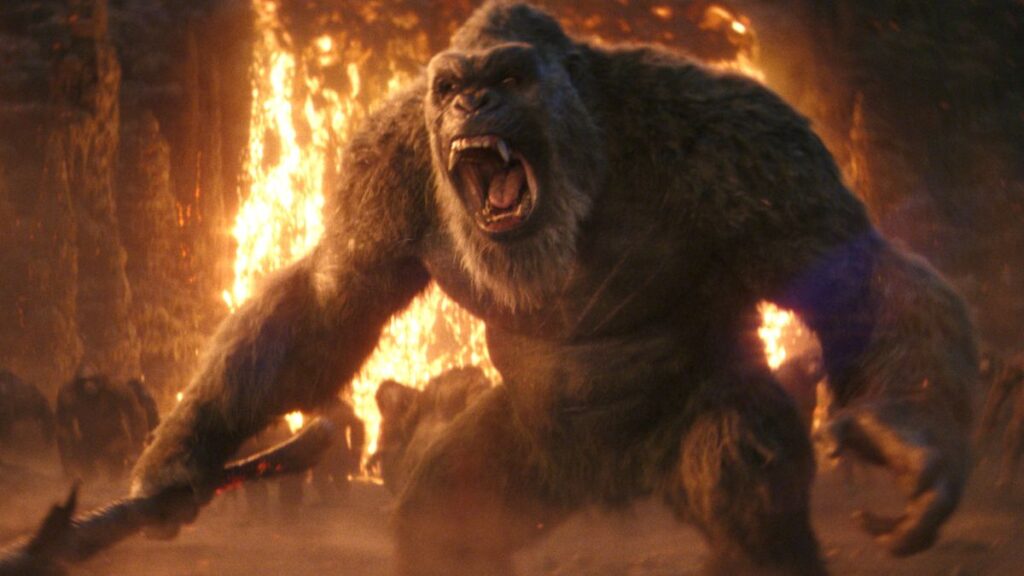
These characters are plainly designed to be window dressing—mere facilitators of the movie’s impending lizard-on-primate violence. And yet, there’s something strange about Godzilla x Kong: The mother-daughter drama between Andrews and Jia is genuinely affecting. Jia, a native of Skull Island, feels displaced trying to assimilate into Western preteen life, and her alienation aches at Andrews, who fears that her child will always be an outcast. It’s standard stuff, but it’s performed sensitively by Hall and Hottle, leading to a payoff that’s surprisingly moving.
The rest of the motion at work is less successful. Structurally speaking, The New Empire is divided into three parallel stories. In the Hollow Earth, Andrews and her comrades find themselves thrust into a lousy Indiana Jones-style adventure, complete with a lost civilization, mystical temples and glyphs, and yet another titan whose emergence will likely delight hardcore Godzilla fans and puzzle everyone else. This material feels tired, as though Wingard can’t be bothered to devote any energy to scenes that don’t involve his hulks smashing one another to bits. Somewhat better, if not entirely persuasive, is Kong’s journey into a chilling netherworld, where he uncovers—if you can believe it—a labor camp. Here, the writers are smart enough not to attempt any simian dialogue, as Wingard and his crew instead use Kong’s facial expressions to convey the ape’s pride, anger, and even fear.
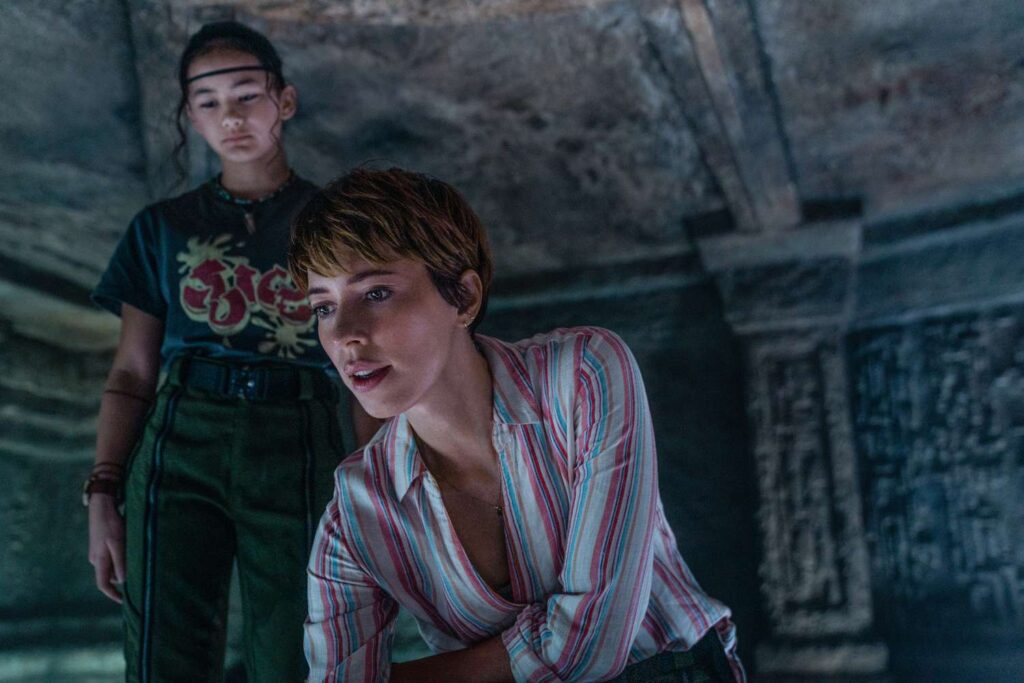
And then there is Godzilla, who… what’s Godzilla’s deal, anyway? He seems to have assumed the role of intercontinental Batman, periodically rousing himself to eliminate the planet’s greatest threats as though he’s a reptilian vigilante. This means that he spends the majority of Godzilla x Kong doing little more than charging his battery. Wingard supplies a few nifty visuals in this regard (look, pink!), but for the most part he seems uncertain of how to handle such a gargantuan figure.
His doubts prove well-founded. The New Empire suffers from plenty of problems, but chief among them is its inconsistent grasp of scale. We are meant to perceive that these beasts are colossal, but they seem to shift in size throughout the movie, and their lack of proportionality renders their enormity meaningless. I didn’t love Edwards’ Godzilla, but he at least recognized the value of contrast, using humans’ point of view to make us reckon with the titans’ monumental stature. Here, everything is just generically huge, which means nothing feels bigger than anything else.
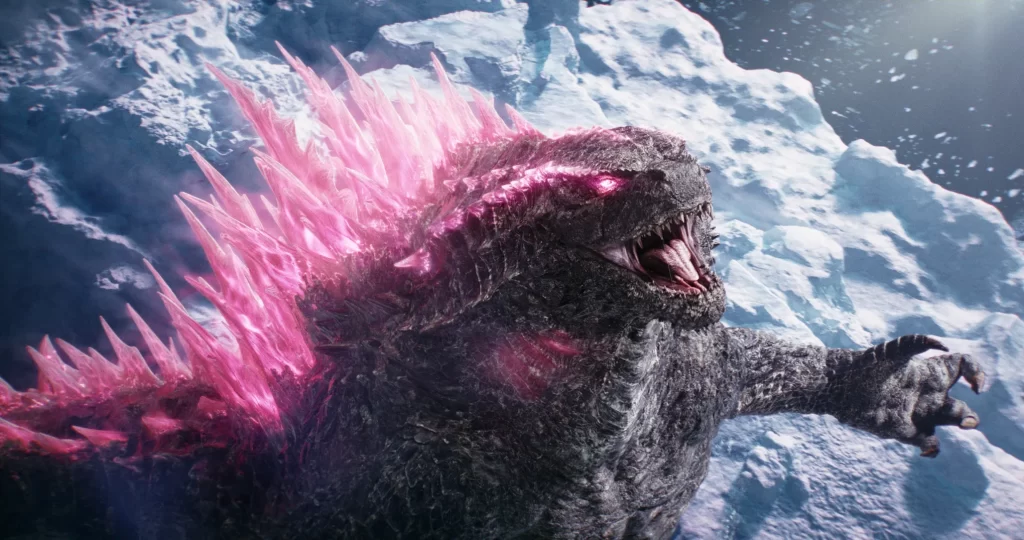
This bland uniformity also plagues the picture’s action choreography. The fight scenes in Godzilla x Kong are loud, hectic, and incoherent, with no sense of rhythm or lucidity. Digital creations fling themselves toward and bounce off one another, but their computerized jostling feels virtual rather than physical. I don’t deny the inherent appeal of cinematic monster brawls; I remain a defiant champion of Peter Jackson’s King Kong remake, both for its sweeping melodrama and its exhilarating carnage. But that’s precisely why the desultory mayhem on display here is so dispiriting. A movie where Godzilla and Kong team up to battle their demented alter egos should unlock your inner child, not feel like it was made by clumsy children.
In one late scene, Godzilla and Kong jump toward their foes in unison, and Wingard captures their leap in slow motion. It’s a cute image—were this an anime, you could imagine a “Vs.” card splashing onto the screen—but it unfortunately sets the stage for one of those interminable climactic fights, noisy and sloppy and stultifying. There’s theoretical pleasure to be found in genre directors playing around in their sandbox, wielding advanced technology to breathe life into their youthful imaginations. But Wingard’s execution here is too muddled, too lazy, for his set pieces to achieve any real joy. His monsters may have powerful bodies, but he’s envisioned their combat with a lizard’s brain.
Grade: C
Jeremy Beck is the editor-in-chief of MovieManifesto. He watches more movies and television than he probably should.
